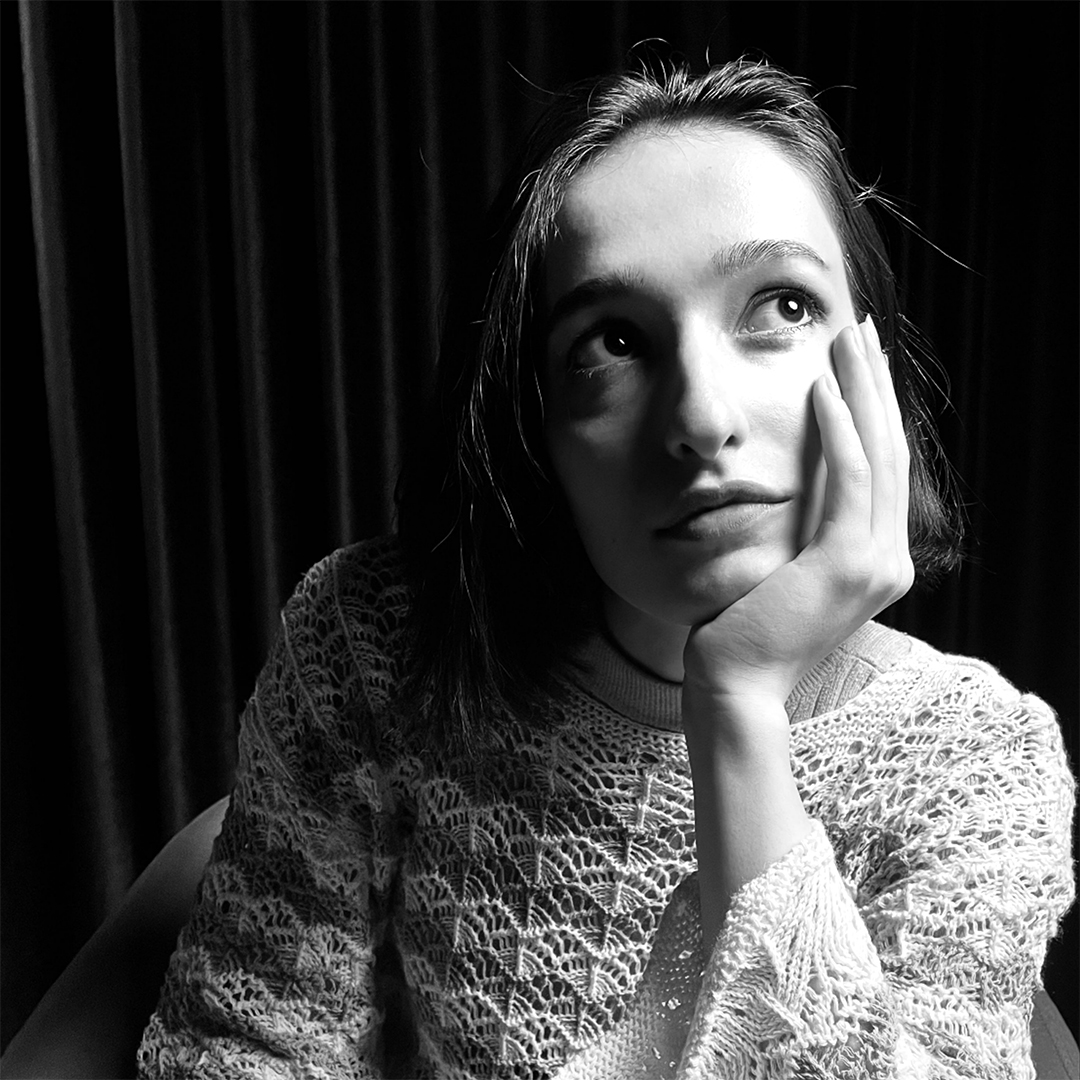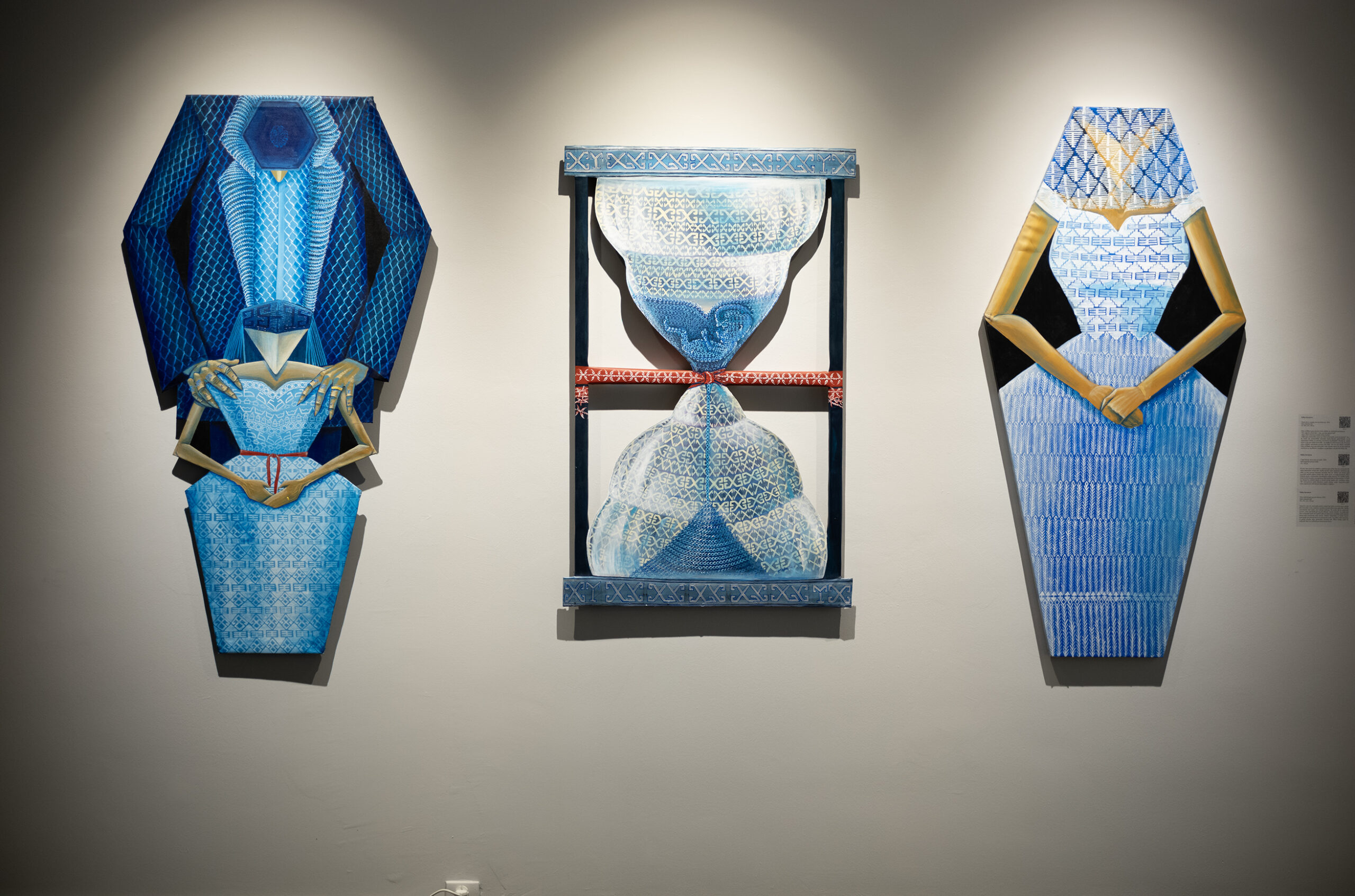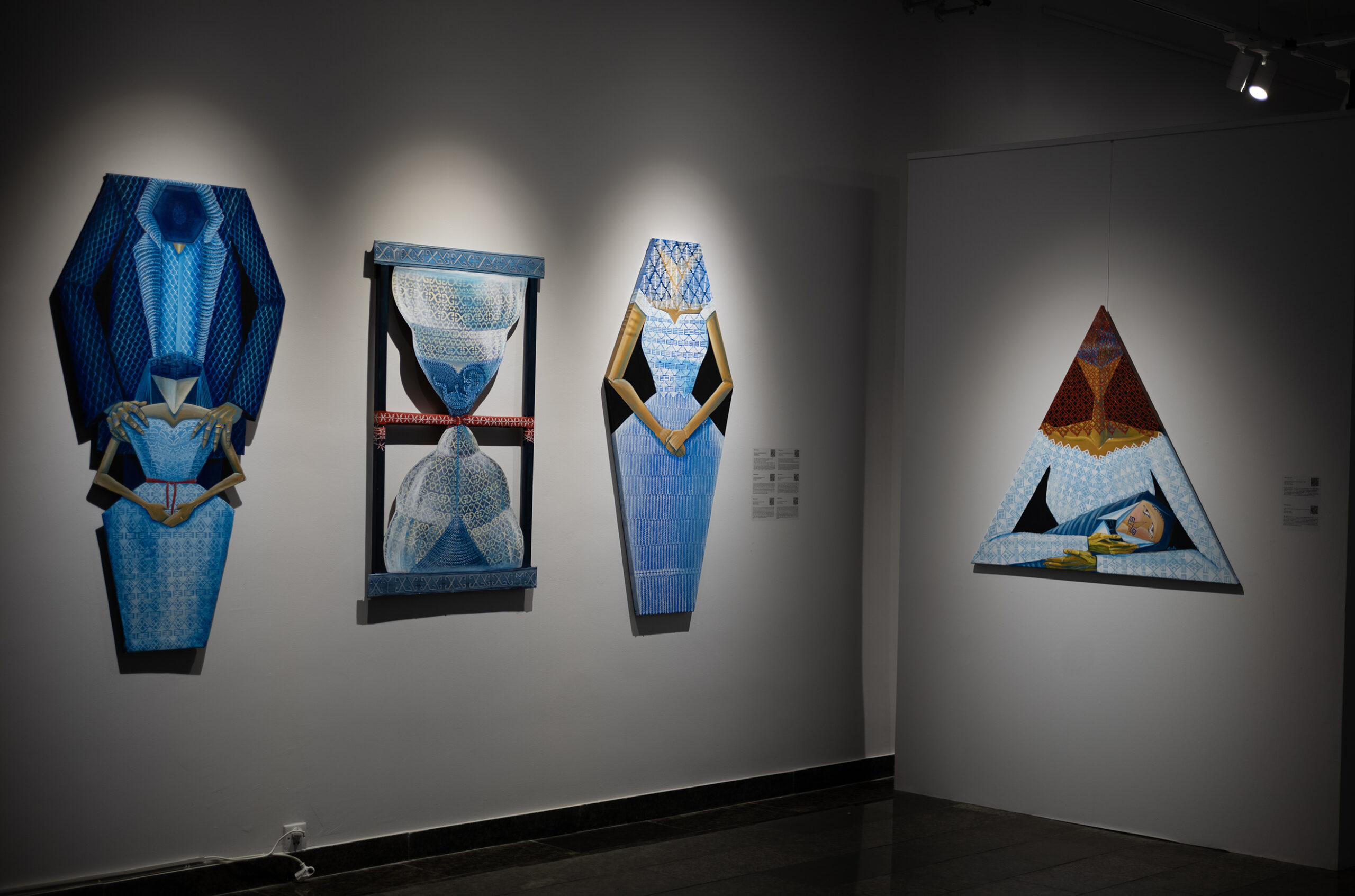
Kafiya Eyvazova

It’s nothing to worry about, girls develop quickly anyway, 2024
Acrylics on canvas
50 x 80 x 30 x 150 cm
Whenever I voice my opposition to early marriages, I often encounter the same familiar justifications:
“Girls mature quickly—does she even look like a child?”
“It’s better for a girl to marry young; at least she won’t sit idle at home.”
“A boy can get married late, but a girl should get married early, she grows up quickly”
Hearing these absurd, rehearsed arguments repeatedly pushed me to explore this issue through my work. This painting is the second piece of the “Bride” series, and its title is drawn directly from the rigid stereotypes ingrained in our society. The artwork visualizes the tragic realities and consequences of these beliefs through symbolic imagery.
At its core, the painting depicts the marriage of an adult man and a young girl, their figures merging into the shape of a coffin. This imagery represents both the physical and emotional deaths caused by early marriages. Some girls bleed to death due to childbirth complications, while others suffer the loss of their dreams, childhood, and youth. The coffin symbolizes futures stolen too soon—of lives overshadowed by a fate they never chose.

Bride, I want seven sons, but only one daughter, 2024
Mixed media on canvas
76 x 120 cm
This work is the first piece in the “Bride” series, critically examining contemporary wedding customs. It delves deeply into society’s ingrained hatred of women and the stereotypes that perpetuate these harmful beliefs. As with other works in the series, each symbol is carefully chosen and intricately connected to the subject matter.
At first glance, the painting resembles an hourglass, but upon closer inspection, it also reflects the proportions of the female body. The hourglass here not only symbolizes the passage of time but also serves as a critique of the Westernized wedding dress, which is often deemed “modern.” At the top and bottom of the hourglass, the stylized letters “XY” are depicted, representing the male chromosomes. Inside the hourglass, the two prominent “X” symbols stand for the female chromosomes (XX). The artist highlights these motifs, underscoring the absurdity of holding women accountable for the gender of a child, especially when they possess only the “XX” chromosome.
I want a daughter-in-law who will take care of my son just like I do, 2025
Acrylics on canvas
120 x 120 x 120 cm
The image depicts a triangular composition of a bride holding a baby in her arms, with the child’s face resembling an adult man. Adorning the bride’s wedding dress and veil are symbols associated with motherhood and fertility. Notably, the bride’s face is absent—her identity and emotions are completely erased within the constraints of her role. Her face is entirely veiled by red fabric, which forms the “Əli belində” (Hands on Hips) ornament, a traditional symbol of motherhood and fertility. This emphasizes how a woman’s individuality is often overshadowed by the societal expectation of motherhood.
The bride’s dress symbolizes the societal expectations and stereotypical roles placed upon her. The baby she holds, dressed as a groom with the face of a mustached man, serves as a humorous critique of the stereotypical thinking embedded within the culture from which the work derives its title.
You can only return in a shroud, 2025
Acrylics on canvas
30 x 70 x 30 x 150 cm
Like the other paintings in the series, this piece takes its name from stereotypical societal beliefs, visually reflecting both their reality and absurdity.
According to old traditions, a bride was warned: “You leave this house in a white wedding dress; you can only return in a white shroud.” While this phrase carries an unmistakable threat, those who use it believe it serves to protect the family.
In the artwork, the bride stands with her head veiled, in a posture reminiscent of a bodyguard, yet her form resembles a coffin. This shape symbolizes the torment caused by the expectations placed on women. Her face is absent—her emotions and identity are lost within this role. The white veil, fully concealing her face, is adorned with daraq (comb) motifs. Traditionally symbolizing the preservation of marriage, this pattern here underscores how a woman’s individuality is overshadowed by societal expectations.
